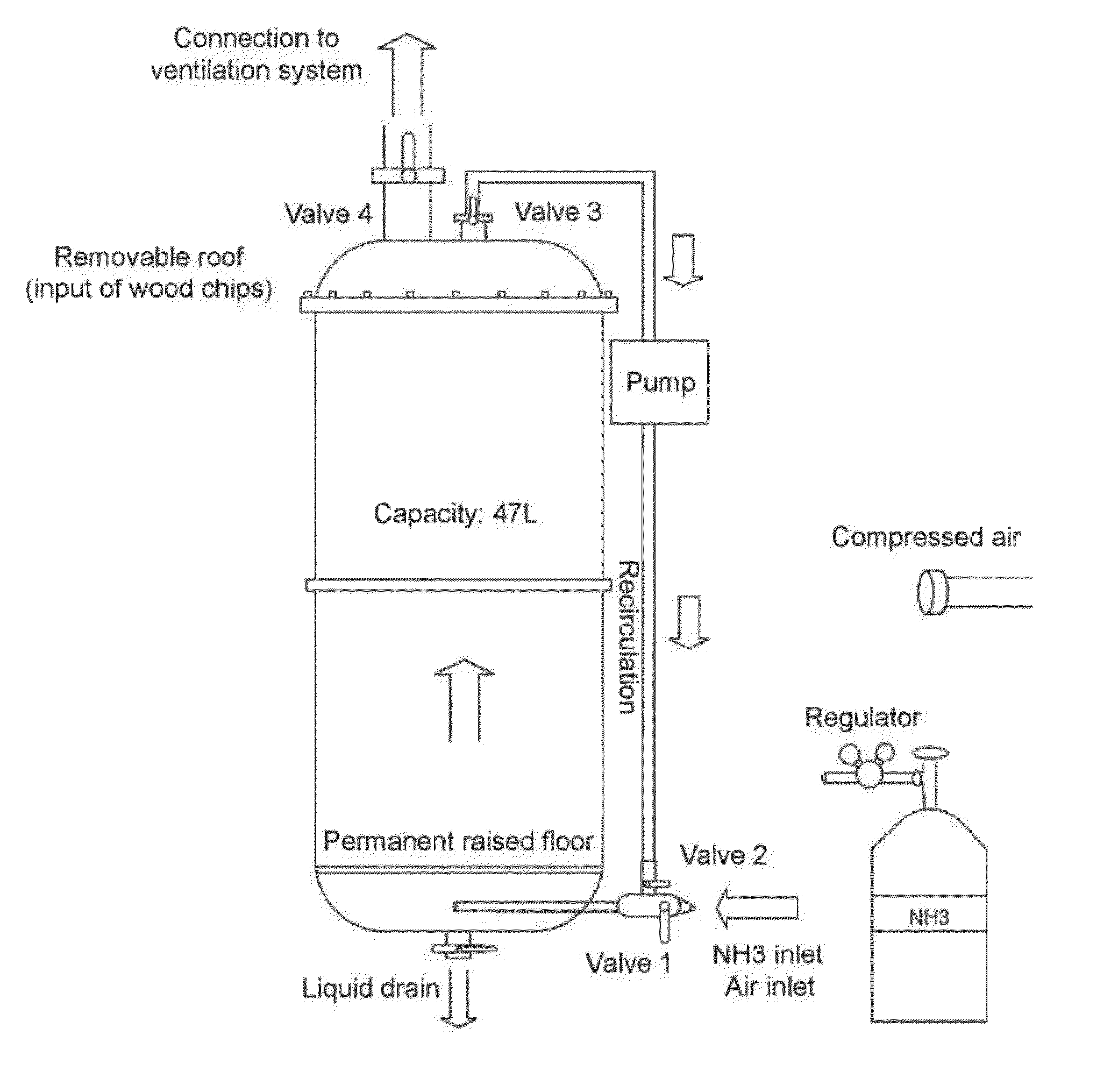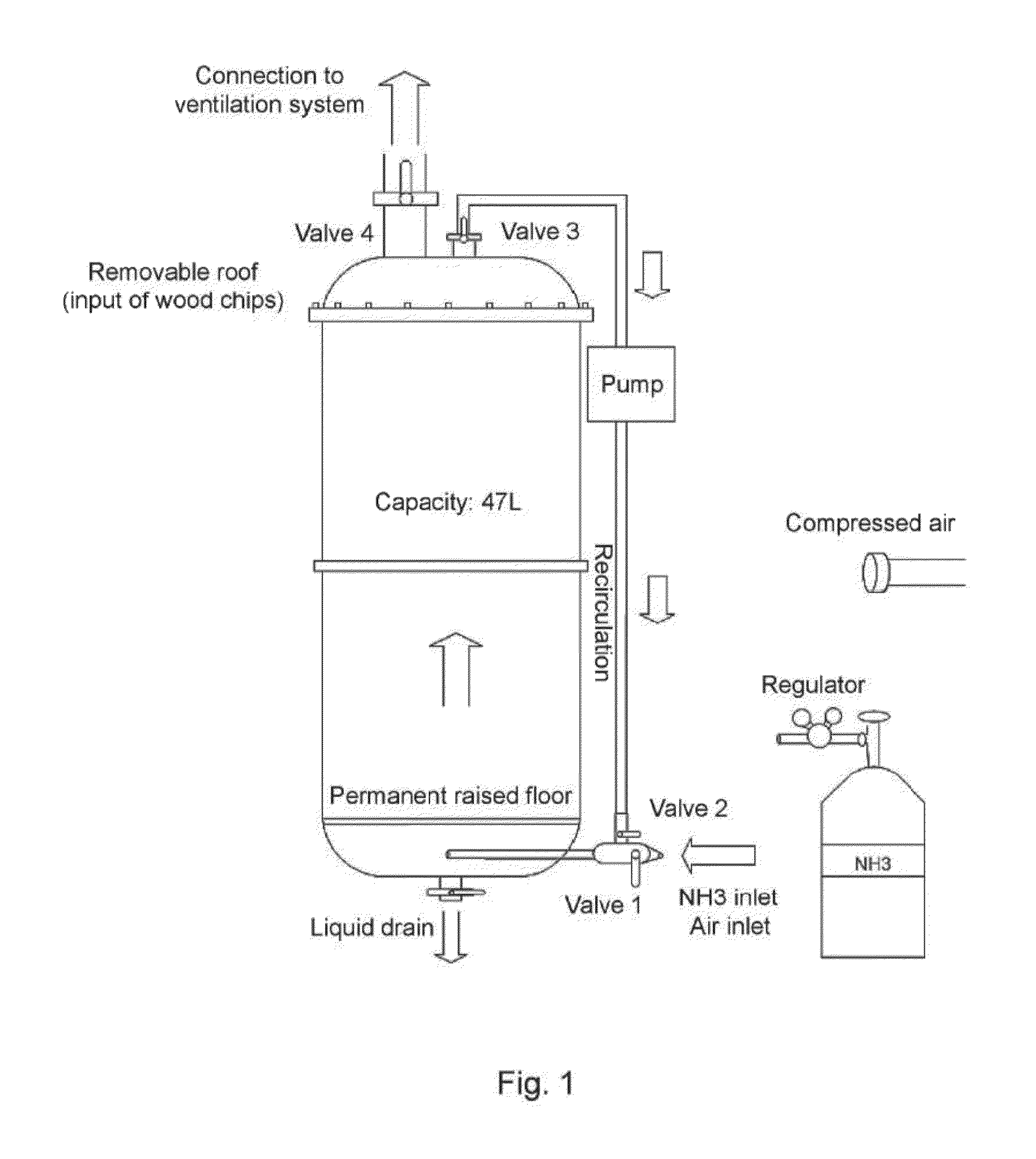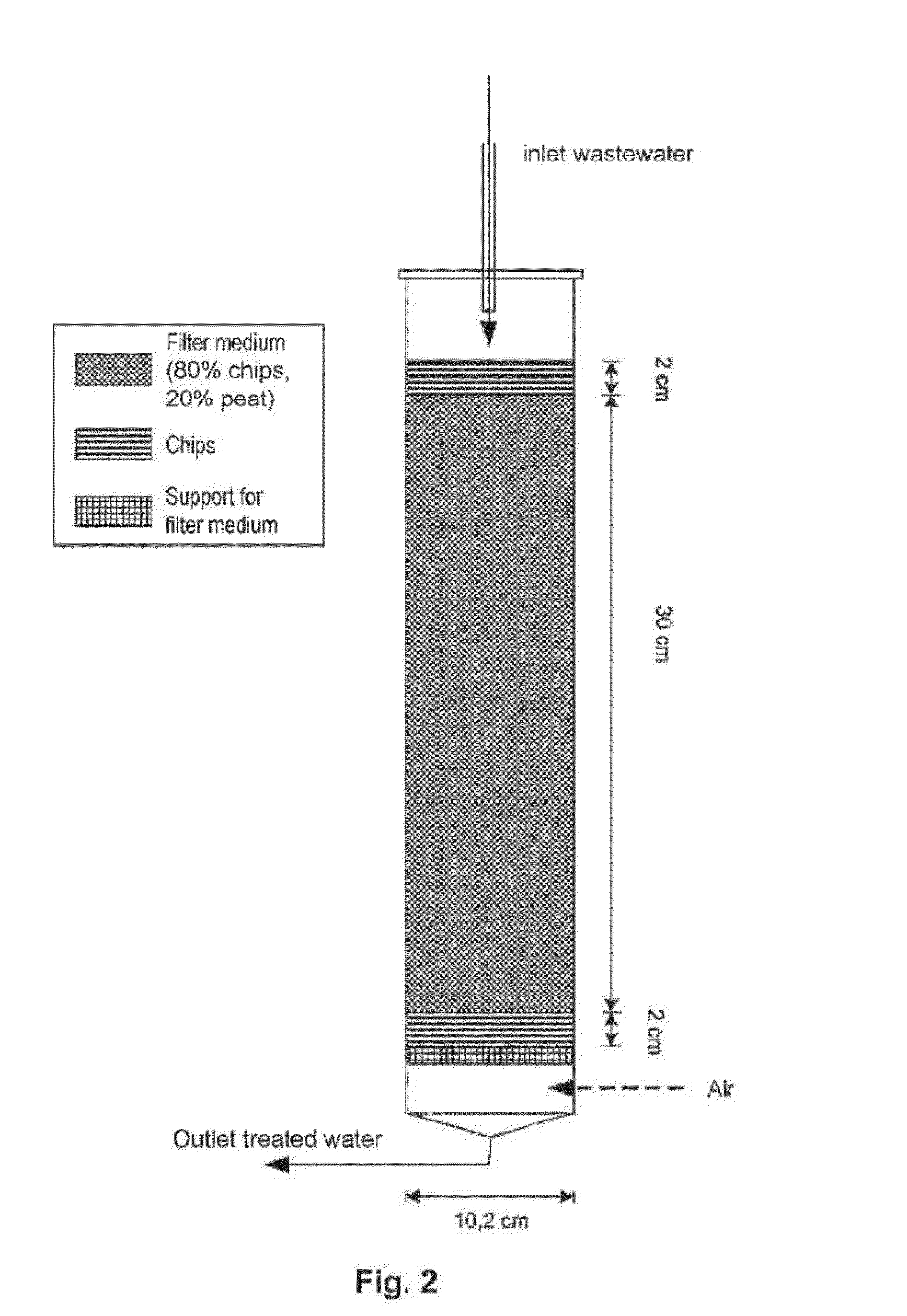System and method for treating waste water by means of passive phosphorus capture
a technology of phosphorus capture and waste water treatment, applied in water contaminants, filtration separation, cation exchangers, etc., can solve the problems of eutrophication of lakes, harmful consequences, and agriculture alone consumes about 97% of world production
- Summary
- Abstract
- Description
- Claims
- Application Information
AI Technical Summary
Benefits of technology
Problems solved by technology
Method used
Image
Examples
example 1
[0082]It is suggested to activate the surface of wood byproducts such as chips, sawdust, shavings, grindings and wood residues obtained from a transformation of ligneous matter, to improve their capacity to retain phosphorus for the purpose of incorporation in a filter designed for wastewater treatment. These byproducts are generally abundantly available and their activation for phosphorus capture is a good way to add-value to them. Table 1 presents the general characteristics of > classified wood chips that can be used.
TABLE 1GranulometrySieve (passing)30 mmSieve (retained) 8 mmFine Particles(Less than 1%SpeciesFirSpruce or jack pine>75%DensityAbout 400 kg / m3
[0083]An efficient process to achieve such activation includes three steps, namely a pretreatment, an iron impregnation and transformation to of iron. It should be noted that a similar process involving impregnation with aluminum and the transformation to aluminum hydroxide may be carried out for the purpose of activating the d...
example 2
[0115]Once the optimal activation process was determined, a series of trials was conducted to verify whether the activated chips used in the context of biofiltration were able to reduce the concentration in phosphorus found in a wastewater of municipal origin in compliance with applicable standards. More precisely, a primary objective of these trials was to verify the abilities of a biofilter consisting of activated chips for phosphorus capture and comparing them with a conventional biofilter media. A second objective was to compare the performance of a biofilter with activated chips and that of standard chips according to the removal of COD, ammoniacal nitrogen and the concentration of iron at outlet. Finally, a third objective consisted in verifying the effect of the concentration in phosphorus of the feed water and of the hydraulic load on the abilities to capture phosphorus. To meet the aforementioned objectives, an experimental plan for the column trials of the activated chips ...
example 3
[0123]A series of trials was conducted in order to have a better knowledge of the influence of various parameters on the efficiency of phosphorus removal from media, and to identify the factors that could lessen or promote the performance of the activated chips in the context of biofiltration. More specifically, the objectives of these trials consisted of:[0124]1. Determining the influence of competitive ions, organic matter, pH and temperature on the phosphorus capture abilities of the activated wood;[0125]2. Determining the influence of granulometry and the cutting types of activated wood on their phosphorus capture performance;[0126]3. Determining the kinetics of phosphorus capture by activated wood and determining whether the hydraulic retention time of the biofiltration columns was sufficient; and[0127]4. Determining the optimal method of operation for passive capture of phosphorus in columns.
[0128]In order to determine the impact of the quality of the water on the quantity of ...
PUM
| Property | Measurement | Unit |
|---|---|---|
| concentrations | aaaaa | aaaaa |
| particle size | aaaaa | aaaaa |
| diameter | aaaaa | aaaaa |
Abstract
Description
Claims
Application Information
 Login to View More
Login to View More - R&D
- Intellectual Property
- Life Sciences
- Materials
- Tech Scout
- Unparalleled Data Quality
- Higher Quality Content
- 60% Fewer Hallucinations
Browse by: Latest US Patents, China's latest patents, Technical Efficacy Thesaurus, Application Domain, Technology Topic, Popular Technical Reports.
© 2025 PatSnap. All rights reserved.Legal|Privacy policy|Modern Slavery Act Transparency Statement|Sitemap|About US| Contact US: help@patsnap.com



